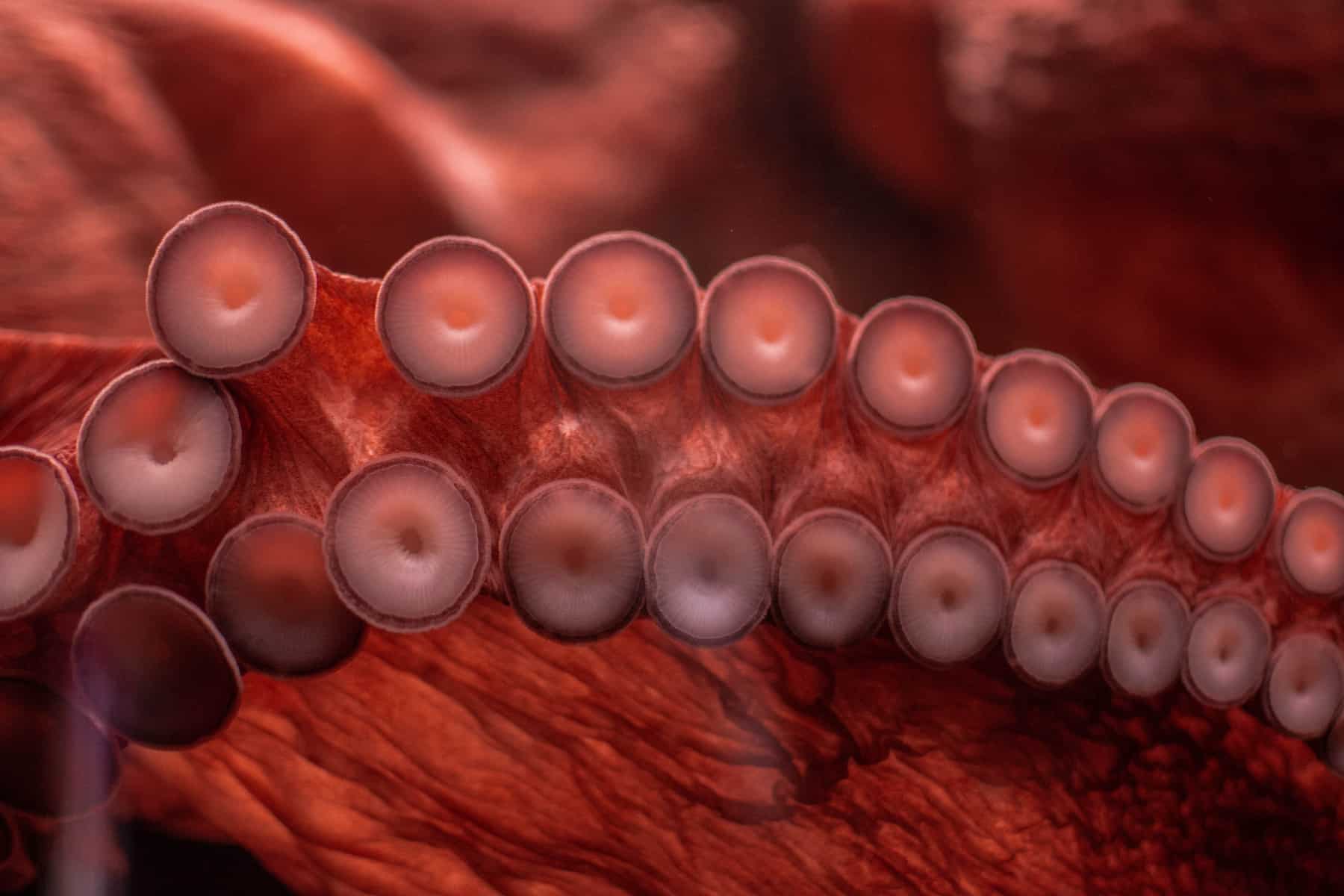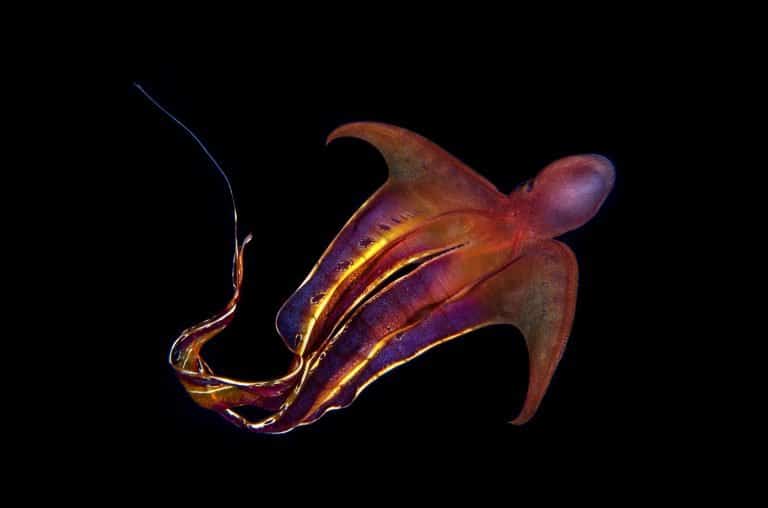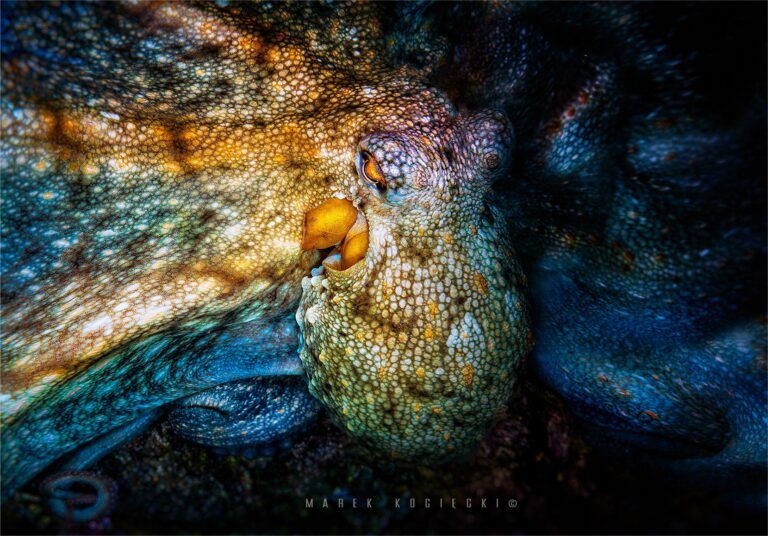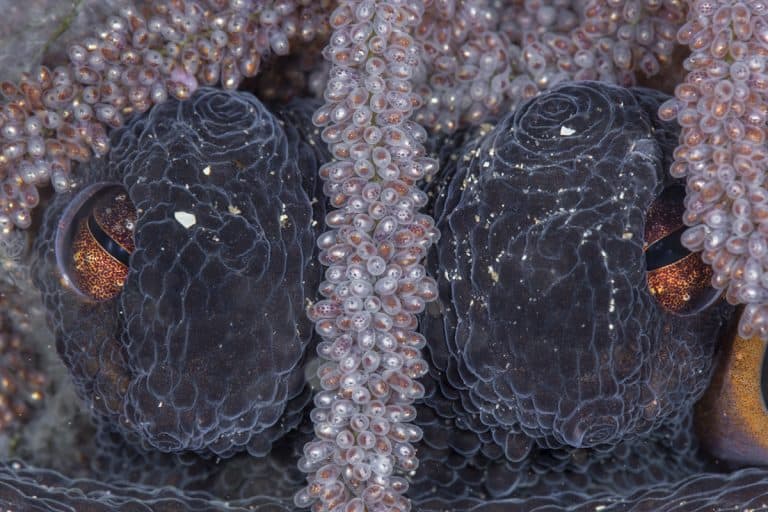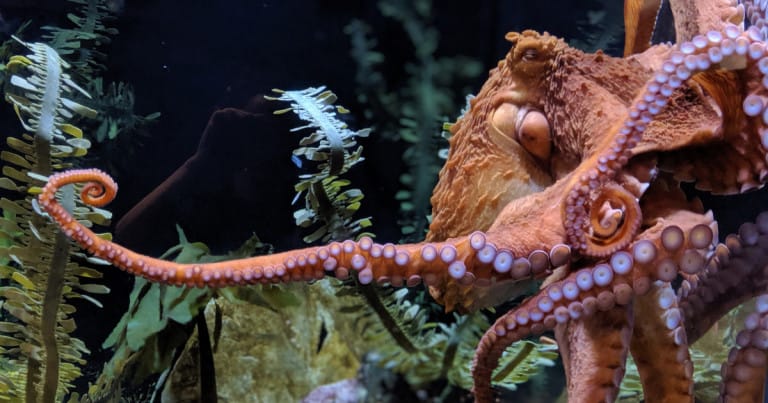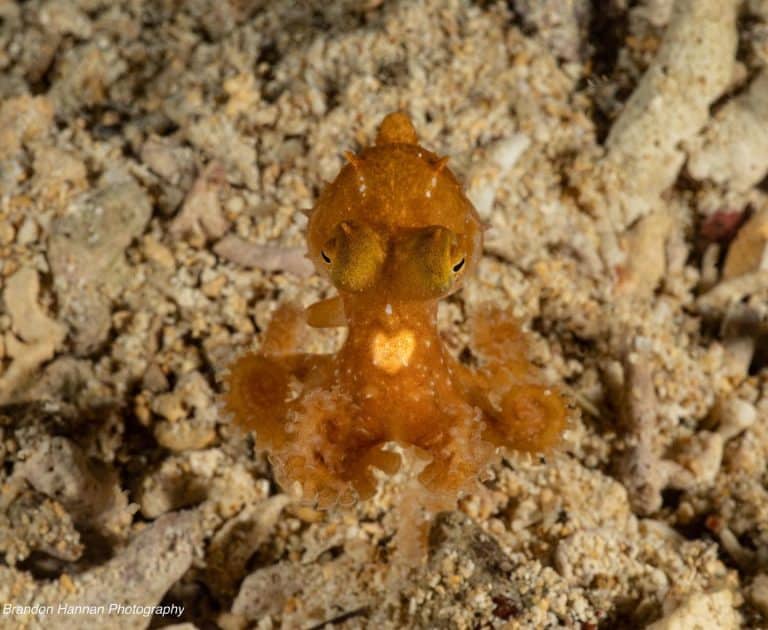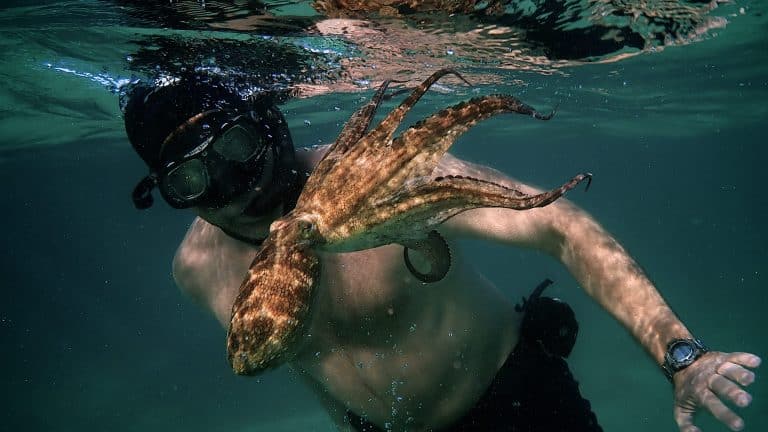Here’s Everything You Need To Know About Octopus Arms
From being able to regenerate an entirely new arm in just 2-4 months to having mini-brains in each arm to being able to smell, taste, and sense light, octopus arms are just one more topic we can all geek out about! With arms making up most of an octopus’s body and being useful for just about everything, it’s time we take a good look at what these eight arms are truly capable of.
Does an octopus have arms or tentacles?
So… which one is it?
When it comes to the cephalopod community, these words tend to get thrown around and used interchangeably.
Let us set the record straight here and now: Octopuses have 8 ARMS and ZERO tentacles.
This is not the case for all cephalopods, but when you’re talking about an octopus specifically, the word tentacles should not be uttered on your lips. Octopuses have 8 arms, which have suckers along the entire appendage, with most species having two rows per arm.
What’s the difference?
Octopus arms are thicker near the base, getting smaller and eventually tapering off at the ends. Arms differ from tentacles, which only have suckers at the end!
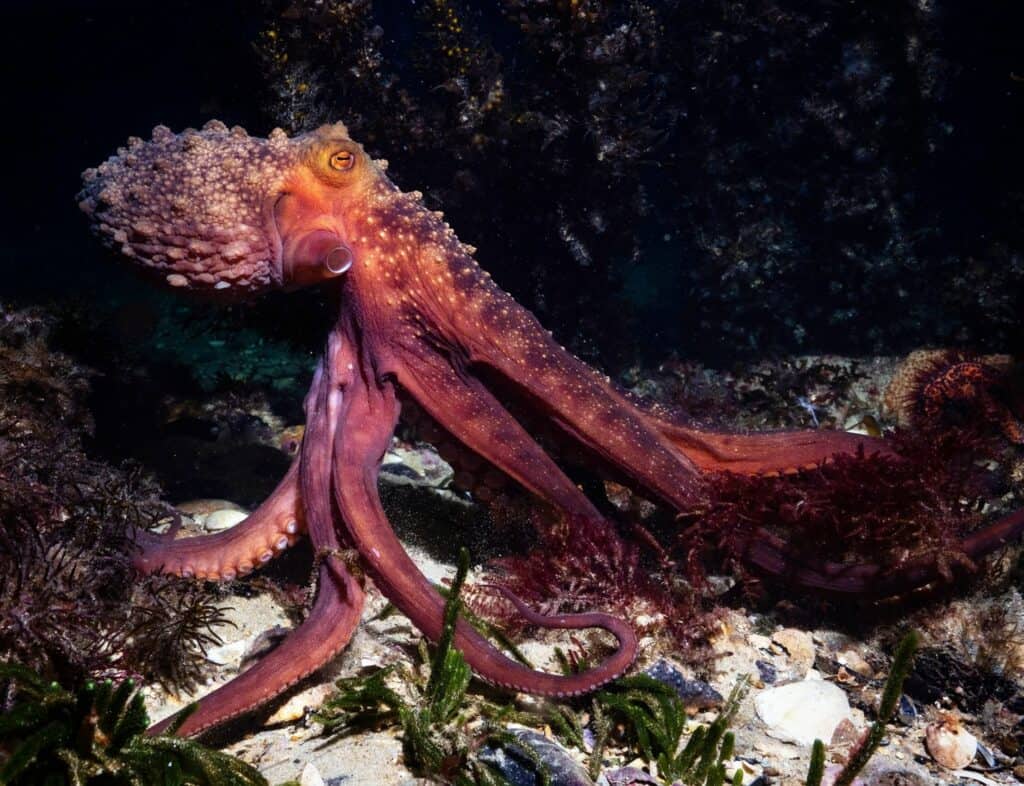
What does an octopus do with its arms?
Arms and suckers make up most of an octopus’s squishy body and are extremely important body parts. Arms and their suckers are used for:
- Movement
- Pushing
- Pulling
- Grasping
- Camouflage
- Mimicry
- Fighting
- Mating
- Capturing prey
- And, tasting!
They are extremely muscular AND flexible with no rigid bones restricting their movements.
When it comes down to it, octopuses are a really smart ball of muscles and neurons.
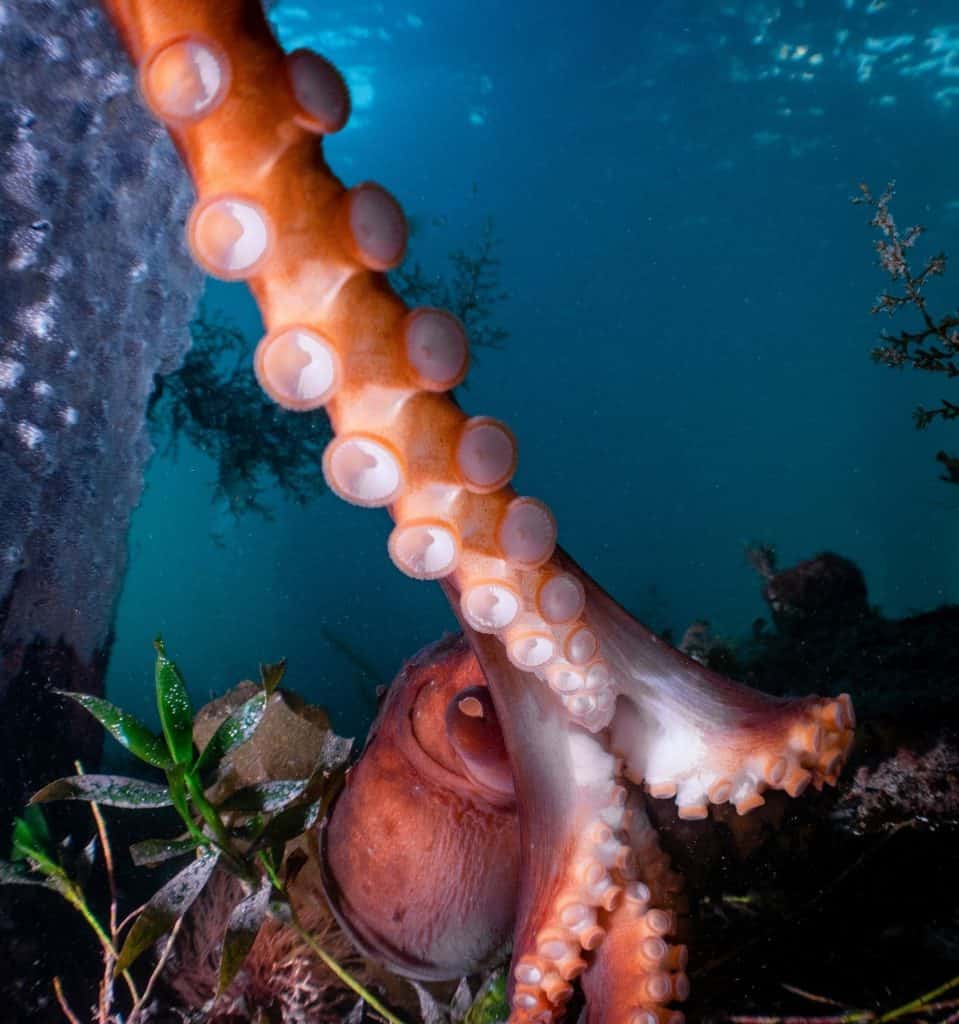
Are all octopus arms the same size and length?
While octopuses across the oceans are living their best octo-armed life (see what I did there 😉), arm lengths and sizes vary greatly between species.
Our mighty Giant Pacific Octopus arm spans (from arm tip to arm tip) can be up to 16 feet (4.9 meters) – that’s about the length of an average car!
The adorable Banded String-Arm Octopus (Ameloctopus litoralis) has exceptionally long arms that are 10x its body length!
The 7-Armed Octopus (Haliphron atlanticus) is there to throw everything into chaos. More on this species later and how it gets its name.
How many suckers are on each arm?
Each of these incredible arms has 280 suckers per arm (~2,240 suckers total).
Note: Check out this blog post and learn everything there is to know about octopus suckers!
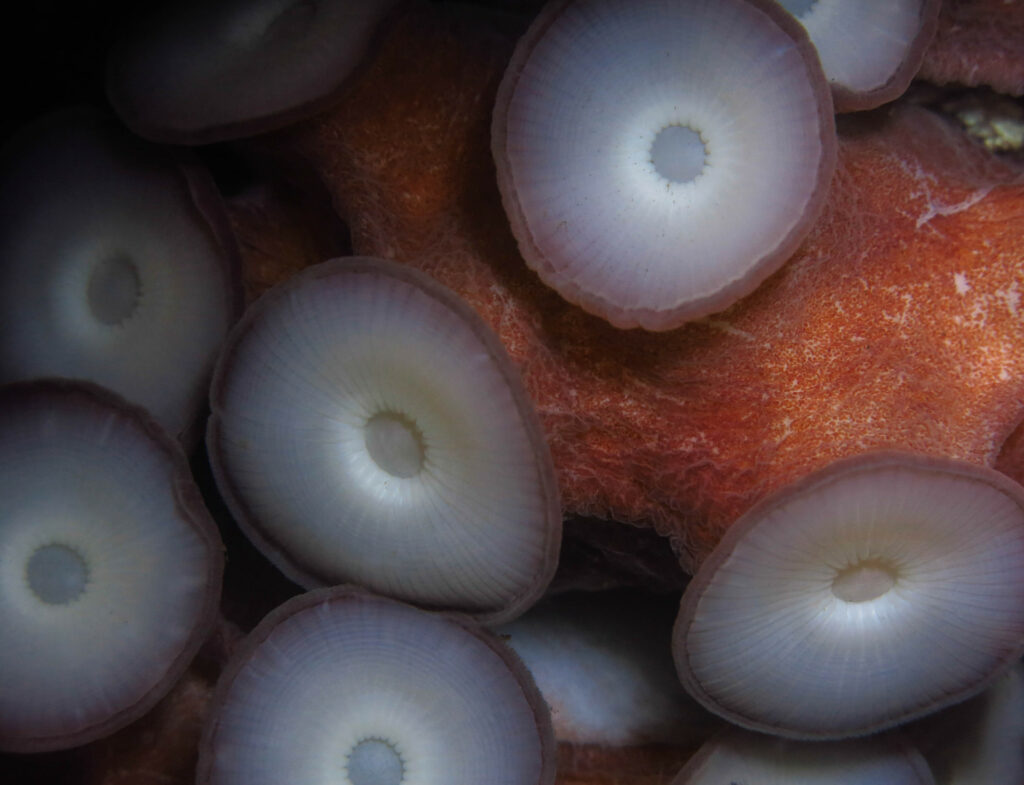
Here’s everything you need to know about octopus arms
With so many of you asking us questions on our Facebook and Instagram posts, we wanted to share some more fun facts about the octopus arms and everything they can do!
Did you know octopuses can regenerate their arms?
*Spoiler Alert* Remember in ‘My Octopus Teacher’ when our beloved main character, the Common Octopus, got her arm bitten off by a shark? She retreated away for a couple of months, but then popped back on the scene with all 8 arms.
That’s all thanks to the amazing power of regeneration!
When an octopus sustains an arm wound, they don’t get a scab or scar as we would. Instead, a layer of cells called epithelium (the same cells that make up our skin layer) covers the wound and beneath this, the regeneration process begins.
A study reported that the first sign of regeneration came in the form of a tiny knob on the arm edge, 3 days after injury. After 11 days, they observed a protrusion which turned into a hook-like structure by day 17. By day 55, a complete structure (mini arm) was visible and by day 130, the new arm tip had fully regenerated.
Presto- A brand spanking new arm complete with suckers and chromatophores!

🐙 Octopus Fun Fact
Getting wounded is not the only reason an octopus might need their regeneration superpowers.
The Banded String-Arm Octopus is missing an ink sac; so to get away from or confuse predators, they will “drop” one of their arms. This arm will wiggle around for up to 5 hours as if to say “come eat me!”
Scientists call this defense tactic “arm dropping” and they’ve come across some String-Armed Octopuses managing just fine with only 2 arms!
This species can regenerate their arms in a quick 6-8 weeks.
Those are some brainy arms!
An octopus has 500 million neurons, but more than half are found OUTSIDE the main, central brain.
Where do they keep these other neurons that amount to 60% of their brainpower? They are clustered in each of their arms!
Each arm essentially has its own mini-brain. These satellite brains can communicate with one another without needing to report back to the central brain.
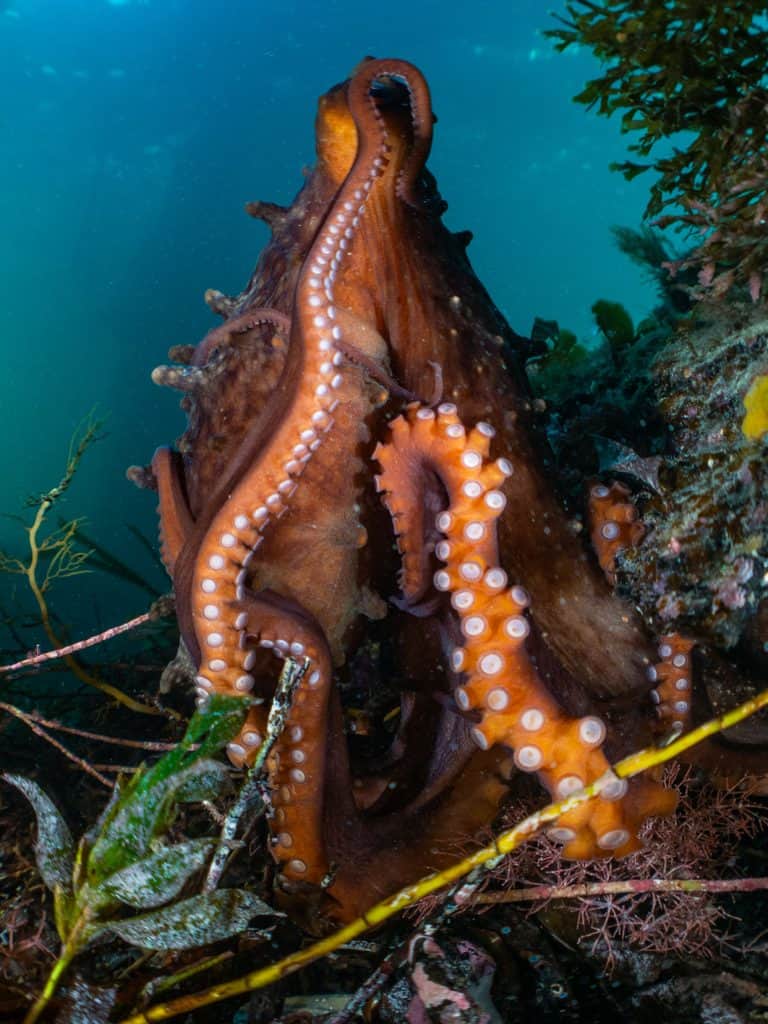
Could you imagine fixing yourself a meal and completing a puzzle all while not having to take your eyes off the TV?
Behavioral neuroscientist Dominic Sivitilli explains it like this…
“The octopus’ arms have a neural ring that bypasses the brain, so the arms can send information to each other without the brain being aware of it. So while the brain isn’t quite sure where the arms are in space, the arms know where each other are and this allows the arms to coordinate during actions like crawling.”
If arms are moving together, the big brain is at work making that happen. One arm doing its own thing looks like it has a mind of its own because it literally has a mind of its own!
On the hunt for more food
The Shallow Water Octopus is often observed poking their arms into holes and crevices to look for food along the reefs they inhabit. This is called “speculative bottom searching” where they will snake their arms out searching every nook and cranny for food.
Having brains in each arm means that octopuses can successfully hunt in areas that they cannot see. Like Tesla has self-driving cars, these octopus arms come programmed to search for snacks!
Pair this with their sucker’s ability to taste and smell what they touch and it starts to make sense why two-thirds of an octopus’ brainpower is located in their arms.
🐙 Octopus Fun Fact
They can sense light with their arms! A study showed that when the light was shined on an octopus’s arm (without the octopus being able to see its arm), it would pull away 84% of the time.
Octopus mating arm: Is that a real thing?
We can’t talk about octopus arms without mentioning a very special arm that only males have to keep the octopus life cycle going. The hectocotylus!
This arm is specialized with grooves to store sperm, ready to transfer it to the female when mating. When it’s go-time, the male will insert his hectocotylus into the female’s mantle and deposit his spermatophore (sperm packets).
Remember the 7-Armed Octopus? The third right arm of males is hectocotylized- the arm develops in an inconspicuous pouch under their right eye giving males the appearance of only having seven arms.
This octopus won’t just deposit his sperm, he will break off his mating arm and give it to the female so she can fertilize her eggs.
The Blanket Octopus and the Dumbo Octopus do this too!
Being a deep-sea octopus and not knowing when they might come across a male, the female octopuses will hoard the hectocotylus using the sperm from their collected male arms when they see fit and making sure they are good for making babies.
Octopus Arms: Stop Squidding Around!
If you want to educate yourself some more about all sorts of different cephalopods, take a look at our encyclopedia. Or, what we call it, our Octopedia!
Connect with other octopus lovers via the OctoNation Facebook group, OctopusFanClub.com! Make sure to follow us on Facebook and Instagram to keep up to date with the conservation, education, and ongoing research of cephalopods.
More Posts To Read:
- Which Direction Is The Front Of An Octopus?
- Do Octopus Have Beaks?
- Do Octopus Have Bones?
- Everything You Need To Know About An Octopus Brain!
- How Many Hearts Does An Octopus Have?
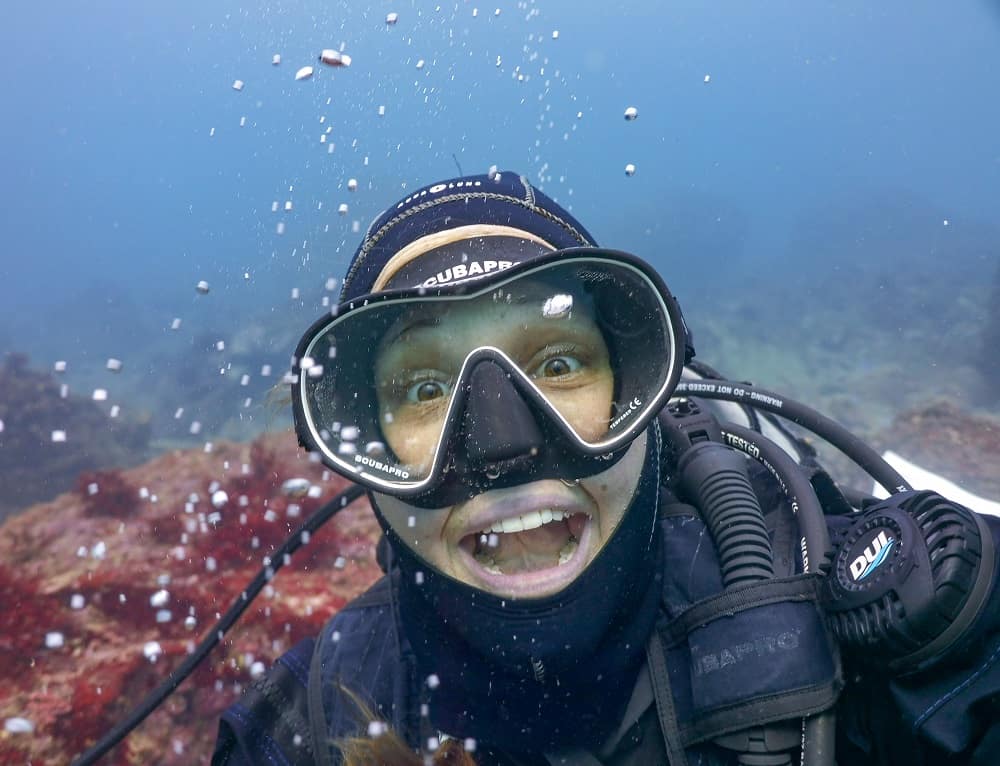
Corinne is a biologist with 10 years of experience in the fields of marine and wildlife biology. She has a Master’s degree in marine science from the University of Auckland and throughout her career has worked on multiple international marine conservation projects as an environmental consultant. She is an avid scuba diver, underwater photographer, and loves to share random facts about sea creatures with anyone who will listen. Based in Japan, Corinne currently works in medical research and scientific freelance writing!
